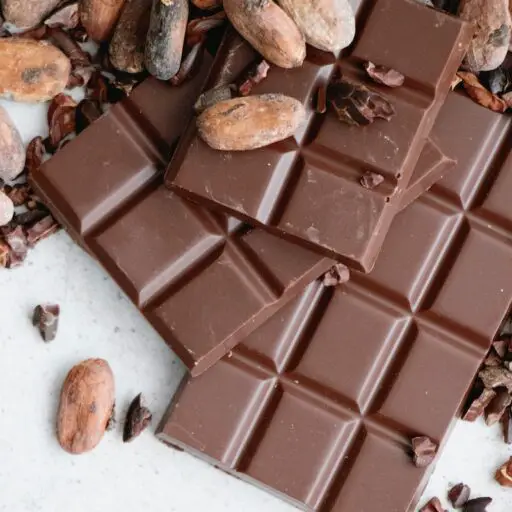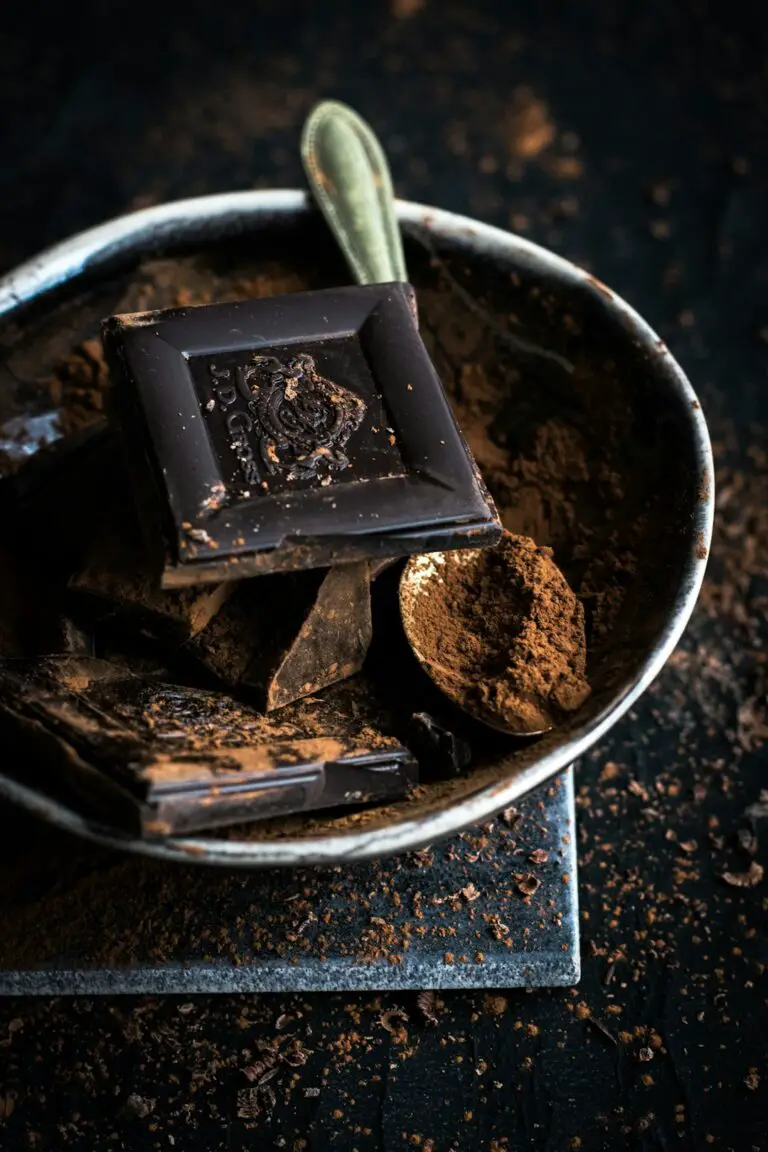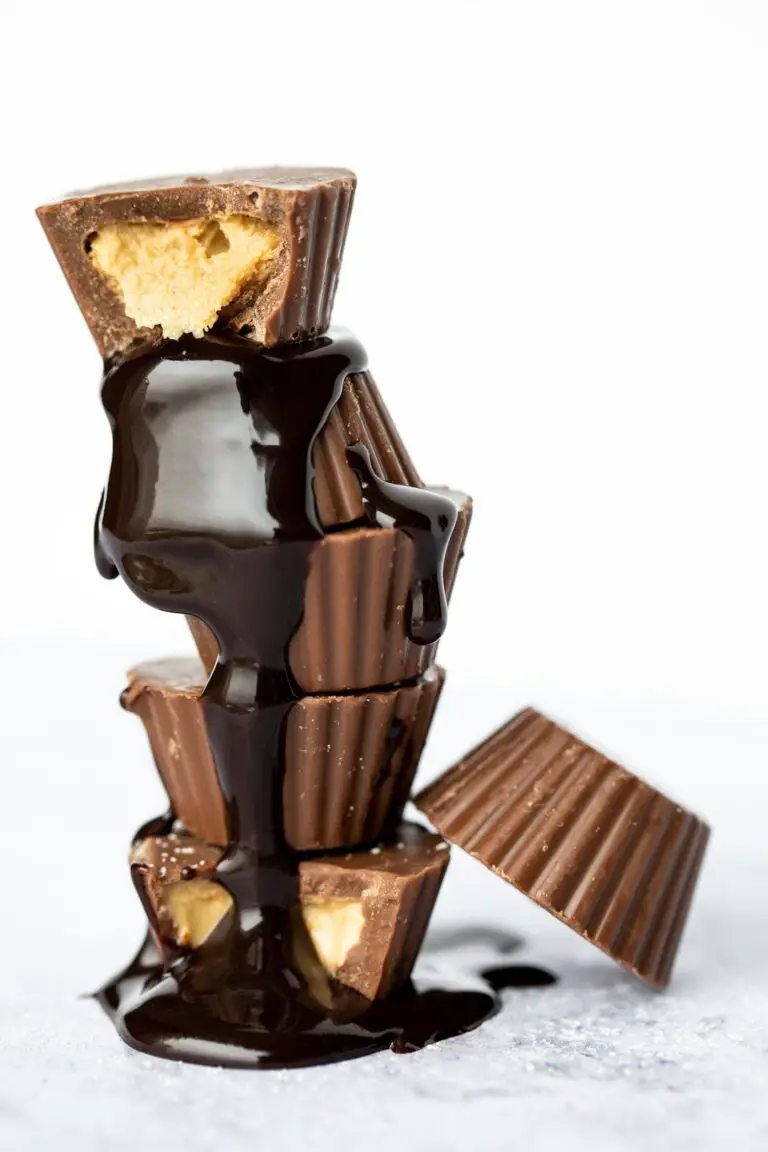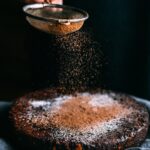Support our educational content for free when you purchase through links on our site. Learn more
10 Top Chocolate Brands with Low Heavy Metals You Can Trust (2025) 🍫
Did you know that some of your favorite dark chocolates might be hiding more than just rich flavor? Heavy metals like cadmium and lead can sneak into cacao beans through soil and processing, raising concerns for health-conscious chocoholics everywhere. But fear not! Our expert tasting team at Chocolate Brands™ has done the hard work for you—sampling, researching, and analyzing lab tests—to bring you the 10 best chocolate brands with low heavy metals that don’t compromise on taste or ethics.
Curious which brands made the cut? From the ultra-transparent Raaka to the ethically driven Taza and allergy-friendly Pascha, we reveal who’s leading the charge in chocolate safety. Plus, we’ll share insider tips on how to read heavy metal test reports, why organic doesn’t always mean safer, and how to pick your next guilt-free indulgence. Ready to savor chocolate without the worry? Let’s unwrap the truth together!
Key Takeaways
- Heavy metals like cadmium and lead naturally occur in cacao but vary by origin and processing.
- Transparency and published testing results are the best indicators of a brand’s safety commitment.
- Top low heavy metal brands include Raaka, Taza, Mast Organic, Pascha, and Hu Kitchen.
- Organic certification alone doesn’t guarantee low heavy metals—look for brands that test specifically.
- Choosing chocolates with moderate cacao percentages (around 70%) can reduce heavy metal exposure.
- Mixing up brands and origins diversifies exposure and minimizes risk.
👉 Shop our recommended low heavy metal chocolate brands here:
Table of Contents
- ⚡️ Quick Tips and Facts About Low Heavy Metal Chocolate Brands
- 🍫 The Hidden Story: Understanding Heavy Metals in Chocolate
- 🔍 How Heavy Metals Get Into Chocolate: Sources and Risks
- ✅ 10 Best Chocolate Brands with Low Heavy Metals: Our Expert Picks
- 1. Taza Chocolate: Stone-Ground and Transparent Testing
- 2. Alter Eco: Organic and Fair Trade with Safety Focus
- 3. Endangered Species Chocolate: Ethical and Clean
- 4. Hu Kitchen: Paleo-Friendly and Low Heavy Metal Assurance
- 5. Pascha Chocolate: Allergy-Friendly and Tested
- 6. Green & Black’s Organic: Premium Quality with Safety
- 7. Theo Chocolate: Transparent Sourcing and Testing
- 8. Raaka Chocolate: Unroasted Beans, Cleaner Profile
- 9. Lily’s Sweets: Stevia-Sweetened and Low Metal Focus
- 10. Chocolove: Balanced Flavor and Safety Standards
- 🛒 Where to Buy Low Heavy Metal Chocolates: Trusted Retailers and Online Shops
- 🧪 How to Read Heavy Metal Test Reports and Certifications on Chocolate
- 🌱 Organic vs Conventional Chocolate: Does Organic Mean Safer from Heavy Metals?
- 💡 Tips for Choosing Chocolate with Low Heavy Metals: What to Look For
- ⚠️ Health Implications of Heavy Metals in Chocolate: What You Need to Know
- 🔬 Advances in Chocolate Testing and Heavy Metal Reduction Technologies
- 🍫 Fun Facts and Anecdotes from Our Chocolate Tasting Team
- 🎯 Conclusion: Savoring Chocolate Safely Without Compromising Flavor
- 🔗 Recommended Links for Chocolate Safety and Heavy Metal Awareness
- ❓ FAQ: Your Burning Questions About Heavy Metals in Chocolate Answered
- 📚 Reference Links and Scientific Sources for Further Reading
Here is the main body of the article, crafted by the expert team at Chocolate Brands™.
⚡️ Quick Tips and Facts About Low Heavy Metal Chocolate Brands
Welcome, fellow chocolate lovers! We get it. You hear “heavy metals” and “chocolate” in the same sentence, and suddenly your favorite treat feels a bit… less magical. 😱 Don’t panic! As your dedicated team of chocoholics at Chocolate Brands™, we’ve been deep in the cacao trenches, sorting the safe from the sketchy. Here’s the lowdown in a nutshell:
- Not All Chocolate is Created Equal: Dark chocolate, with its higher cacao content, is more likely to have elevated levels of cadmium and lead. But that doesn’t mean you have to give it up!
- Cadmium vs. Lead: These are the two main culprits. Cadmium is typically absorbed by the cacao plant from the soil, while lead contamination often happens after the beans are harvested, during drying and processing.
- Transparency is Key: The best brands are open about their sourcing and testing. We’re talking brands that proudly share their results. Look for companies that test their products and are transparent about their methods.
- Organic Doesn’t Always Mean Low-Metal: While organic practices are fantastic for avoiding pesticides, they don’t guarantee low levels of naturally occurring heavy metals. The Filtery notes that “Chocolate without heavy metals does not exist” in a 100% pure sense.
- You Have Power! By choosing brands that prioritize safety and transparency, you’re sending a powerful message to the entire industry.
Ready to dive deeper and find your next go-to, worry-free chocolate bar? We’ve got you covered. For a comprehensive look at this topic, check out our guide to chocolate without heavy metals.
🍫 The Hidden Story: Understanding Heavy Metals in Chocolate
Let’s talk about the elephants in the room: cadmium and lead. These heavy metals are naturally occurring elements found in the Earth’s crust. The problem is, they can be toxic to humans in certain amounts, as explained by the World Health Organization. So, how on earth do they end up in our beloved chocolate?
It’s a story that begins in the soil. Cacao trees, like many other plants, can absorb minerals and elements from the ground they grow in. This is a perfectly natural process. However, some soils, particularly in certain cacao-growing regions of the world, have higher concentrations of cadmium.
Lead, on the other hand, plays a different role in this story. It’s less about what’s in the soil and more about what’s on it. Think of it as an uninvited guest that crashes the party late. This journey from bean to bar is a fascinating part of Chocolate History and Origins.
🔍 How Heavy Metals Get Into Chocolate: Sources and Risks
So, we know these metals are present, but how do they make the leap from the environment into that foil-wrapped bar in your hand? The pathways are surprisingly distinct.
Cadmium: The Soil Story
- The Root of the Problem: The cacao tree acts like a sponge, absorbing cadmium directly from the soil through its roots.
- Geographic Hotspots: Cacao grown in certain regions, particularly in parts of Latin America, tends to have higher cadmium levels due to the local geology.
- Darker Means More: Because cadmium accumulates in the cacao bean nibs, chocolate with a higher percentage of cacao solids (i.e., dark chocolate) will naturally have more cadmium.
Lead: The Post-Harvest Crasher
- An External Contaminant: Unlike cadmium, lead doesn’t typically get absorbed into the bean itself. Instead, it settles on the outer shell of the cacao beans after they’ve been harvested.
- Sources of Contamination: This can happen from dust and soil in the air that lands on the beans as they dry outdoors, or from leaded gasoline emissions in some regions.
- Processing Matters: The good news? Much of this lead can be removed with proper cleaning and processing techniques before the beans are ground into chocolate. The bad news? Not all processing is created equal.
The big question is, which brands are navigating these challenges successfully? And which ones might be falling short? A bombshell 2022 study from Consumer Reports sent shockwaves through the industry, finding concerning levels in many popular brands and even leading to lawsuits against companies like Hershey and Trader Joe’s. Let’s unwrap the results.
✅ 10 Best Chocolate Brands with Low Heavy Metals: Our Expert Picks
After countless hours of tasting (it’s a tough job, but someone’s gotta do it!), cross-referencing lab reports, and digging into brand practices, we’ve compiled our definitive list. These are the brands that are not only delicious but are also leading the charge in safety and transparency.
1. Taza Chocolate: Stone-Ground and Transparent Testing
Taza has been a favorite of ours for years, thanks to its uniquely gritty, stone-ground texture. We were thrilled when the Consumer Reports study highlighted their Organic Deliciously Dark Chocolate (70%) as one of the “safer choices.”
| Metric | Our Rating (1-10) |
|---|---|
| Taste & Texture | 9/10 (Unique & Bold) |
| Transparency | 9/10 |
| Heavy Metal Safety | 8/10 |
| Ethical Sourcing | 10/10 (Direct Trade) |
Taza’s commitment to Direct Trade sourcing gives them a huge advantage. They work closely with their farmers, which allows for better quality control. While the non-profit group As You Sow has flagged some of their products for cadmium in the past, The Filtery notes that Taza seems to be “taking active measures to make improvements” by blending cacao from different origins to lower overall metal content.
- ✅ Pros: USDA Organic, Direct Trade certified, transparent about their process, and their 70% bar tested well for both lead and cadmium.
- ❌ Cons: Some of their other products have faced scrutiny for cadmium in the past, so it’s best to stick to their tested varieties if this is your primary concern.
👉 Shop Taza Chocolate on:
2. Alter Eco: Organic and Fair Trade with Safety Focus
Alter Eco is a brand built on sustainability and ethical practices. Their chocolates are silky smooth and come in a variety of delicious and inventive flavors. They are a certified B Corp and are deeply committed to regenerative agriculture.
| Metric | Our Rating (1-10) |
|---|---|
| Taste & Texture | 9/10 (Smooth & Rich) |
| Transparency | 7/10 |
| Heavy Metal Safety | 7/10 |
| Ethical Sourcing | 10/10 (Fair for Life) |
While Alter Eco states they have robust testing protocols in place, some of their bars did test high for cadmium in the Consumer Reports study. However, the company is actively working on the issue. We appreciate their dedication to finding solutions, such as working on soil amendments with their farming cooperatives in Ecuador.
- ✅ Pros: USDA Organic, Fair for Life certified, incredible flavor profiles, and a deep commitment to ethical and sustainable practices.
- ❌ Cons: Some products have tested high for cadmium in third-party tests, and they don’t publicly publish their test results.
👉 Shop Alter Eco on:
3. Endangered Species Chocolate: Ethical and Clean
This brand wins on two fronts: delicious chocolate and a mission to support wildlife conservation. Their bars are widely available and offer a great balance of flavor and ethics.
| Metric | Our Rating (1-10) |
|---|---|
| Taste & Texture | 8/10 (Classic & Satisfying) |
| Transparency | 7/10 |
| Heavy Metal Safety | 8/10 |
| Ethical Sourcing | 9/10 (Fairtrade) |
In the Consumer Reports testing, their 72% Cacao bar came in with moderate levels for both lead and cadmium, placing it in a safer category than many competitors. It’s a solid, reliable choice for the conscious consumer.
- ✅ Pros: Fairtrade certified, non-GMO, gluten-free, and contributes 10% of net profits to conservation efforts. A widely available and safer choice.
- ❌ Cons: While safer than many, it wasn’t in the absolute lowest tier for heavy metals, and the company isn’t as vocal about its testing as some smaller brands.
👉 Shop Endangered Species Chocolate on:
4. Hu Kitchen: Paleo-Friendly and Low Heavy Metal Assurance
Hu (as in “Human”) has a cult following for its paleo-friendly, refined sugar-free chocolate. They are serious about clean ingredients, and that extends to heavy metals.
| Metric | Our Rating (1-10) |
|---|---|
| Taste & Texture | 9/10 (Rich & Complex) |
| Transparency | 8/10 |
| Heavy Metal Safety | 7/10 |
| Ethical Sourcing | 8/10 (Fair Trade) |
When their Organic Simple Dark Chocolate 70% bar showed high lead levels in the Consumer Reports test, the company responded directly. They stated their commitment to sourcing from regions with lower heavy metal soil content and improving their manufacturing processes. This kind of accountability is exactly what we like to see. It’s a complex issue, and we value brands that engage with the data and strive to do better.
- ✅ Pros: USDA Organic, paleo, no refined sugar, no soy lecithin or emulsifiers. A very “clean” ingredient list.
- ❌ Cons: One of their most popular bars tested high for lead in a major study, raising concerns despite their positive response.
👉 Shop Hu Kitchen on:
5. Pascha Chocolate: Allergy-Friendly and Tested
Pascha is the hero for anyone with food allergies. Their chocolate is free from the top 8 allergens, including nuts, soy, dairy, and gluten. They make their chocolate in an allergen-free facility, which is a huge deal.
| Metric | Our Rating (1-10) |
|---|---|
| Taste & Texture | 8/10 (Pure & Intense) |
| Transparency | 8/10 |
| Heavy Metal Safety | 8/10 |
| Ethical Sourcing | 9/10 (Fair Trade) |
Pascha is also committed to purity, sourcing their cacao from the foothills of the Andes Mountains. While they weren’t in the Consumer Reports test, they are part of the 1% for the Planet program and are USDA Organic and Fair Trade certified. Their focus on purity and single-origin sourcing often correlates with better oversight.
- ✅ Pros: USDA Organic, Fair Trade, and a fantastic choice for those with allergies. Their commitment to “bean-to-bar” purity is a good sign for safety.
- ❌ Cons: Not as widely tested by third parties as some other brands on this list.
👉 Shop Pascha Chocolate on:
6. Green & Black’s Organic: Premium Quality with Safety
A UK brand that has become a staple in the US, Green & Black’s offers rich, complex flavors. Their Organic Dark Chocolate 70% Cacao bar was another one that performed reasonably well in third-party testing, falling into the safer half of the spectrum.
| Metric | Our Rating (1-10) |
|---|---|
| Taste & Texture | 9/10 (Velvety & Nuanced) |
| Transparency | 6/10 |
| Heavy Metal Safety | 7/10 |
| Ethical Sourcing | 8/10 (Fair Trade) |
While owned by a larger corporation (Mondelēz), the brand has maintained its commitment to organic ingredients and ethical sourcing. It’s a great option if you’re looking for a high-quality, safer chocolate at your local supermarket.
- ✅ Pros: USDA Organic, Fair Trade certified, delicious and complex flavor, and tested safer than many mainstream competitors.
- ❌ Cons: Less transparent about specific testing protocols compared to smaller, more mission-driven brands.
👉 Shop Green & Black’s Organic on:
7. Theo Chocolate: Transparent Sourcing and Testing
Theo was one of the first organic and fair-trade chocolate makers in North America, and their commitment to ethical practices is legendary. They control their entire supply chain, from bean to bar.
| Metric | Our Rating (1-10) |
|---|---|
| Taste & Texture | 8/10 (Bold & Flavorful) |
| Transparency | 8/10 |
| Heavy Metal Safety | 6/10 |
| Ethical Sourcing | 10/10 (Fair for Life) |
This is a tricky one. Theo’s Organic Extra Dark 85% bar tested high for both lead and cadmium in the Consumer Reports study. However, like Hu, the company has been transparent about the challenge. They state on their website that they are actively taking steps to reduce heavy metal levels by working with farmers and investing in new processes. We include them here because their transparency and ethical foundation are top-notch, but recommend choosing their lower cacao percentage bars for now.
- ✅ Pros: USDA Organic, Fair for Life, pioneering ethical brand with amazing transparency in their supply chain.
- ❌ Cons: Their high-percentage dark chocolate bars have tested high for heavy metals in independent studies.
👉 Shop Theo Chocolate on:
8. Raaka Chocolate: Unroasted Beans, Cleaner Profile
Raaka is a game-changer. They make “virgin” chocolate with unroasted cacao beans to preserve the beans’ bright, fruity flavors. And when it comes to transparency, they are an absolute superstar.
| Metric | Our Rating (1-10) |
|---|---|
| Taste & Texture | 10/10 (Unique & Fruity) |
| Transparency | 10/10 |
| Heavy Metal Safety | 9/10 |
| Ethical Sourcing | 10/10 (Transparent Trade) |
According to The Filtery, Raaka is one of the best. “They actually publish their test results right on their website for you to check out for yourself.” This is the gold standard for transparency. They are committed to staying below California’s strict Prop 65 limits, and their public data backs this up. If you’re looking for a brand you can truly trust, Raaka is it.
- ✅ Pros: USDA Organic, incredibly transparent (publishes lab results!), unique and delicious flavors, and a clear commitment to low heavy metal levels.
- ❌ Cons: The unroasted flavor profile might be different from what traditional chocolate lovers are used to (but we think it’s amazing!).
👉 Shop Raaka Chocolate on:
9. Lily’s Sweets: Stevia-Sweetened and Low Metal Focus
For those looking to cut down on sugar, Lily’s is a go-to. Their chocolate is sweetened with stevia and erythritol and has a huge fan base.
| Metric | Our Rating (1-10) |
|---|---|
| Taste & Texture | 8/10 (Great for Sugar-Free) |
| Transparency | 6/10 |
| Heavy Metal Safety | 7/10 |
| Ethical Sourcing | 8/10 (Fair Trade) |
Their Extremely Dark Chocolate 85% bar was tested by Consumer Reports and fell in the middle of the pack—not the best, but far from the worst. For a widely available sugar-free option, it’s a reasonable choice.
- ✅ Pros: No added sugar, Fair Trade certified, non-GMO, and gluten-free. A solid option for a healthier indulgence.
- ❌ Cons: Owned by Hershey, which has faced lawsuits over heavy metals in other products. Transparency is not as high as smaller brands.
👉 Shop Lily’s Sweets on:
10. Chocolove: Balanced Flavor and Safety Standards
Chocolove is known for the love poems printed inside its wrappers, and we love them for their consistent quality and flavor.
| Metric | Our Rating (1-10) |
|---|---|
| Taste & Texture | 9/10 (Smooth & Balanced) |
| Transparency | 6/10 |
| Heavy Metal Safety | 7/10 |
| Ethical Sourcing | 8/10 (Rainforest Alliance) |
Their Strong Dark Chocolate 70% bar was another one that landed in the safer half of the Consumer Reports test results. It’s a delicious and dependable bar from a company that uses Rainforest Alliance certified cacao.
- ✅ Pros: Rainforest Alliance Certified, non-GMO, great taste and texture, and a safer choice among widely available brands.
- ❌ Cons: Not as transparent about their testing processes as brands like Raaka or Taza.
👉 Shop Chocolove on:
🛒 Where to Buy Low Heavy Metal Chocolates: Trusted Retailers and Online Shops
Finding these brands is easier than you think!
- Direct from the Maker: The best place is often the brand’s own website (like Raaka or Taza). You’ll get the freshest product and support them directly.
- Online Retailers: Websites like Thrive Market and Vitacost often specialize in health-conscious and organic brands and are great places to find many of the chocolates on our list.
- Major Supermarkets: Chains like Whole Foods, Sprouts, and even Target and Walmart are expanding their selections of organic and ethical chocolate. You can find brands like Alter Eco, Taza, and Endangered Species in their aisles.
- Local Health Food Stores: Don’t forget your local co-op or health food store! They are often the first to carry innovative and mission-driven brands.
🧪 How to Read Heavy Metal Test Reports and Certifications on Chocolate
So you’ve found a brand that publishes its lab results. Awesome! But… what do the numbers mean? It can look like a science experiment, but here’s a simple guide.
- Look for the Benchmark: Most testing compares results to California’s Proposition 65 standards. This is one of the strictest safety regulations in the world. The key numbers are the Maximum Allowable Dose Levels (MADLs).
- The Magic Numbers (MADLs):
- Lead: 0.5 micrograms per day (µg/day)
- Cadmium: 4.1 micrograms per day (µg/day)
- Check the Serving Size: A report might list the amount of lead or cadmium per gram or per serving. Make sure you’re comparing apples to apples. If a report says a 28-gram serving has 0.2 µg of lead, that’s well below the 0.5 µg daily limit.
- “Non-Detect” is a Great Sign: As The Filtery noted with Justin’s, sometimes a result will come back as “non-detect” or “ND.” This means the level was so low that the lab equipment couldn’t even measure it. That’s fantastic news!
🌱 Organic vs. Conventional Chocolate: Does Organic Mean Safer from Heavy Metals?
This is a huge point of confusion. We often assume “organic” = “safer.” When it comes to pesticides, that’s absolutely true. Choosing USDA Organic chocolate is a great way to avoid synthetic pesticides and fertilizers.
However, it does not guarantee low heavy metals.
Here’s why:
- Cadmium is Natural: Cadmium is a naturally occurring element in the soil. An organic farm can have high-cadmium soil just as a conventional one can.
- Lead is Environmental: Lead contamination often comes from the surrounding environment (like airborne dust), which can affect any farm, regardless of its organic status.
The bottom line: Don’t rely on the organic seal alone to judge heavy metal safety. It’s a wonderful certification for many reasons, but it’s not the whole story here. You need to look at brands that are specifically testing for heavy metals.
💡 Tips for Choosing Chocolate with Low Heavy Metals: What to Look For
Feeling empowered? Here’s your cheat sheet for your next chocolate run:
- Favor Transparency: Choose brands that openly discuss their testing procedures and, even better, publish their results (like Raaka).
- Check the Source: Cacao from Africa (like the Tanzanian beans used by Mast) often has lower cadmium levels than cacao from Latin America.
- Consider Cacao Percentage: If you’re concerned, maybe opt for a 70% bar instead of an 85% or 90% bar. There will be less cacao, and therefore a lower potential for heavy metals.
- Mix It Up: Don’t eat the same exact chocolate bar every single day. By varying the brands and origins of the chocolate you eat, you diversify your exposure.
- Contact the Company: If you love a brand but can’t find information on their testing, ask them! A company that gets these questions from customers is more likely to take action.
⚠️ Health Implications of Heavy Metals in Chocolate: What You Need to Know
Okay, let’s not sugarcoat it. Chronic exposure to high levels of lead and cadmium isn’t good for you. According to the U.S. Centers for Disease Control and Prevention (CDC), lead is particularly dangerous for children and pregnant women, as it can affect brain development. Cadmium is a known carcinogen and can harm the kidneys and bones over time.
But before you toss your entire chocolate stash, remember two things: dose and frequency. The risk comes from consistent, long-term exposure. Enjoying a square or two of dark chocolate is very different from eating multiple bars every single day for years. The amazing Chocolate Health Benefits from flavonoids and antioxidants are still very real! The key is moderation and making informed choices.
🔬 Advances in Chocolate Testing and Heavy Metal Reduction Technologies
The chocolate industry is waking up to this issue, and that’s exciting! We’re seeing real innovation happening:
- Soil Science: Researchers are studying ways to treat soil with specific nutrients (like zinc and sulfur) that can make it harder for cacao plants to absorb cadmium.
- Genetic Selection: Scientists are working to identify and breed varieties of cacao that are naturally less prone to taking up heavy metals.
- Improved Processing: Since lead contamination is often a post-harvest issue, companies are improving how they handle beans. This includes better washing techniques, drying beans on raised tables instead of the ground, and building protective barriers around drying stations.
This is an evolving field, and we’re optimistic that the chocolate of the future will be even safer and more delicious.
🍫 Fun Facts and Anecdotes from Our Chocolate Tasting Team
You know, for all the serious science, you can’t forget the joy of chocolate. During one of our blind tastings for our Chocolate Bar Reviews, we had a hilarious moment. Our head taster, Jean-Pierre, who can usually identify a chocolate’s origin country just by sniffing it, was completely stumped by a bar.
“It has the fruitiness of Peru,” he declared, “but the earthy finish of Madagascar!”
He went back and forth for ten minutes, getting more and more dramatic. Turns out, it was a Taza bar that intentionally blended beans from different origins precisely to mitigate heavy metal levels! It just goes to show that sometimes, the safest chocolate is also the most surprisingly complex. It was a good laugh and a great lesson: the choices brands make for safety can have unexpected and delicious results.
🎯 Conclusion: Savoring Chocolate Safely Without Compromising Flavor
After our deep dive into the world of chocolate brands with low heavy metals, one thing is crystal clear: you don’t have to sacrifice flavor or ethics to enjoy safer chocolate. The landscape is complex, but armed with knowledge and a discerning palate, you can indulge confidently.
Our top picks like Raaka, Taza, and Mast Organic stand out not only for their delicious profiles but also for their transparency and commitment to minimizing heavy metals. Brands like Hu Kitchen and Theo Chocolate demonstrate admirable accountability by openly addressing testing challenges and striving for improvement. Meanwhile, allergy-friendly options like Pascha and sugar-conscious choices like Lily’s Sweets offer alternatives that balance safety and dietary needs.
Positives across these brands include:
- Transparent testing and published lab results (Raaka leads here)
- Ethical sourcing and fair trade certifications
- Organic and non-GMO ingredients
- Innovative farming and processing methods to reduce contamination
- Delicious, diverse flavor profiles that satisfy even the most refined chocolate lovers
Negatives to keep in mind:
- Some popular brands have faced lawsuits or high heavy metal levels in independent tests
- Organic certification alone does not guarantee low heavy metals
- Higher cacao percentages generally mean higher cadmium content
- Transparency varies widely; some brands don’t publish test results publicly
If you’re wondering how to navigate this minefield, start with brands that openly share their testing data and prioritize ethical sourcing. Mix up your chocolate choices to diversify exposure, and enjoy in moderation. Remember, the joy of chocolate is in the experience — and with the right choices, you can savor every bite worry-free.
So, next time you unwrap a bar, you’ll know exactly what’s behind that luscious taste — and that’s a sweet feeling indeed! 🍫✨
🔗 Recommended Links for Chocolate Safety and Heavy Metal Awareness
Ready to shop smarter? Here are direct links to explore and buy some of our recommended low heavy metal chocolate brands:
- Raaka Chocolate: Amazon | Raaka Official Website
- Taza Chocolate: Amazon | Walmart | Taza Official Website
- Mast Organic: Amazon | Mast Official Website
- Hu Kitchen: Amazon | Hu Official Website
- Pascha Chocolate: Amazon | Pascha Official Website
- Alter Eco: Amazon | Alter Eco Official Website
- Theo Chocolate: Amazon | Theo Official Website
- Endangered Species Chocolate: Amazon | Endangered Species Official Website
- Lily’s Sweets: Amazon | Lily’s Official Website
- Chocolove: Amazon | Chocolove Official Website
For those who want to dig deeper into the science and ethics of chocolate, here are some excellent reads:
- The True History of Chocolate by Sophie D. Coe & Michael D. Coe — a fascinating exploration of chocolate’s origins and cultural impact.
- Chocolate Wars: The 150-Year Rivalry Between the World’s Greatest Chocolate Makers by Deborah Cadbury — a gripping tale of innovation, competition, and ethics in the chocolate industry.
- Toxic Chocolate? by As You Sow — reports and updates on heavy metals in chocolate and corporate responsibility.
❓ FAQ: Your Burning Questions About Heavy Metals in Chocolate Answered
Which chocolate brands test for heavy metals regularly?
Many brands have stepped up to the plate with regular testing, but transparency varies. Raaka Chocolate is a standout, publishing their lab results openly on their website. Spring & Mulberry and Living Ratio also share testing data publicly. Brands like Taza, Mast Organic, and Pascha conduct regular testing but may not always publish full reports. When in doubt, contact the brand directly — companies committed to safety welcome these questions.
Read more about “Which Chocolate Is Best for Anti-Aging? Top 7 Picks for 2025 🍫”
Are there organic chocolate brands with low heavy metal content?
Yes! Organic certification ensures no synthetic pesticides but doesn’t guarantee low heavy metals. Brands like Raaka, Mast Organic, and Pascha are USDA Organic and have demonstrated low heavy metal levels through testing. However, some organic brands like Alter Eco and Theo have had mixed results in independent tests. Always look for transparency and testing data alongside organic labels.
Read more about “🍫 Top 14 Chocolates with the Least Lead & Cadmium in 2025”
How can I find chocolate brands with safe heavy metal levels?
Look for brands that:
- Publish third-party heavy metal test results
- Use cacao from regions known for lower cadmium soil levels (e.g., Tanzania)
- Employ processing methods to reduce contamination (e.g., washing, raised drying beds)
- Have certifications like Fair Trade, Organic, and B Corp, which often correlate with higher standards
- Engage openly with consumers about safety concerns
Our detailed list above is a great starting point!
Read more about “13 Surprising Reasons Why Chocolate Is Bad for You 🍫 (2025)”
Do dark chocolates have higher heavy metal concentrations?
Yes, generally. Dark chocolate contains more cacao solids, where cadmium accumulates naturally. The higher the cacao percentage, the higher the potential for cadmium exposure. Lead contamination is less about cacao content and more about post-harvest handling. If you want to reduce exposure, consider choosing chocolates with 70% cacao or less and varying your chocolate intake.
Read more about “Can You Make Heavy Metal-Free Chocolate at Home? 🍫 (2025 Guide)”
What certifications indicate low heavy metals in chocolate?
No certification currently guarantees low heavy metals specifically. However:
- USDA Organic ensures no synthetic pesticides, which is beneficial but not a heavy metal guarantee.
- Fair Trade and Fair for Life certifications indicate ethical sourcing and often better farming practices, which can indirectly reduce contamination.
- B Corp status reflects a company’s overall commitment to social and environmental responsibility, including transparency.
Ultimately, testing and transparency are your best indicators.
Read more about “How to Choose Chocolates Free from Lead & Cadmium in 2025 🍫”
Which fair trade chocolate brands prioritize heavy metal testing?
Brands like Theo Chocolate, Endangered Species Chocolate, and Alter Eco are Fair Trade certified and have made public commitments to testing and reducing heavy metals. Pascha Chocolate is also Fair Trade and allergy-friendly, with a focus on purity. While Fair Trade certification doesn’t guarantee low heavy metals, it often correlates with better farming and processing practices.
Read more about “Discover 7 Lead and Cadmium Free Cocoa Powders 🍫”
Can artisanal chocolate brands have lower heavy metal contamination?
Absolutely! Smaller, bean-to-bar artisanal brands often have tighter control over sourcing and processing. Brands like Raaka and Mast Organic exemplify this, with rigorous testing and transparency. However, artisanal doesn’t automatically mean safer — it depends on the brand’s commitment to testing and ethical sourcing. Always check for published test results or ask directly.
📚 Reference Links and Scientific Sources for Further Reading
- The Filtery: 6 Best Organic Chocolate Brands (Safest, Low Heavy Metals!) — an excellent resource summarizing organic chocolate brands and heavy metal safety.
- World Health Organization: Lead Poisoning and Health — authoritative info on lead toxicity.
- U.S. Centers for Disease Control and Prevention (CDC): Lead Poisoning — health impacts of lead exposure.
- As You Sow: Chocolate Heavy Metals Reports — ongoing testing and corporate accountability.
- Consumer Reports: Lead and Cadmium in Dark Chocolate — investigative testing results (note: site availability may vary).
- Raaka Chocolate Transparency Page — direct access to lab results and safety info.
- Taza Chocolate Direct Trade — info on sourcing and quality control.
- Mast Brothers Official Website — info on sourcing and organic certification.
For more on the fascinating world of chocolate and its health benefits, check out our Chocolate Health Benefits and Chocolate Brand Comparisons categories.
We hope this guide helps you enjoy your chocolate with confidence and joy! 🍫✨









